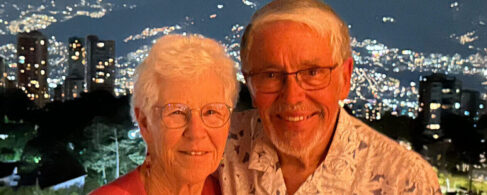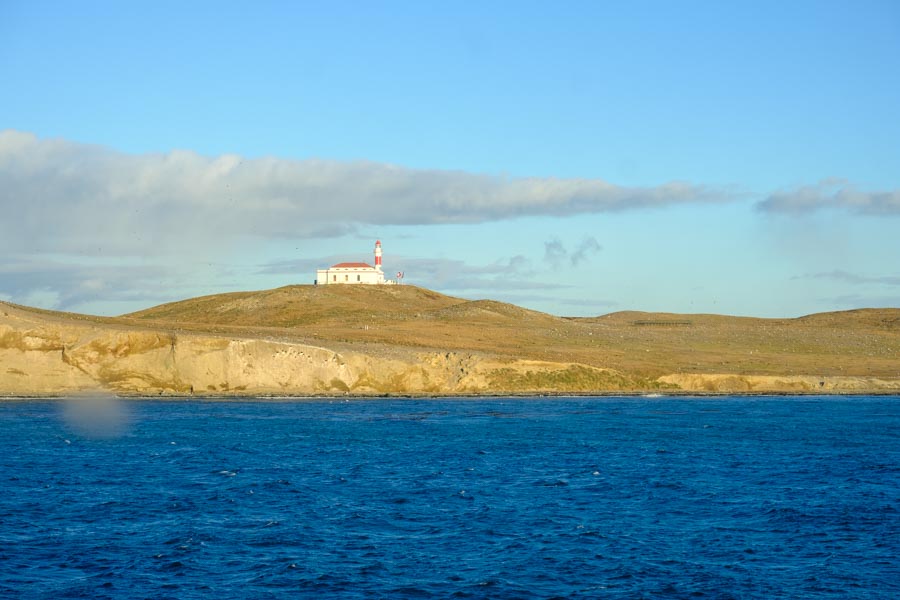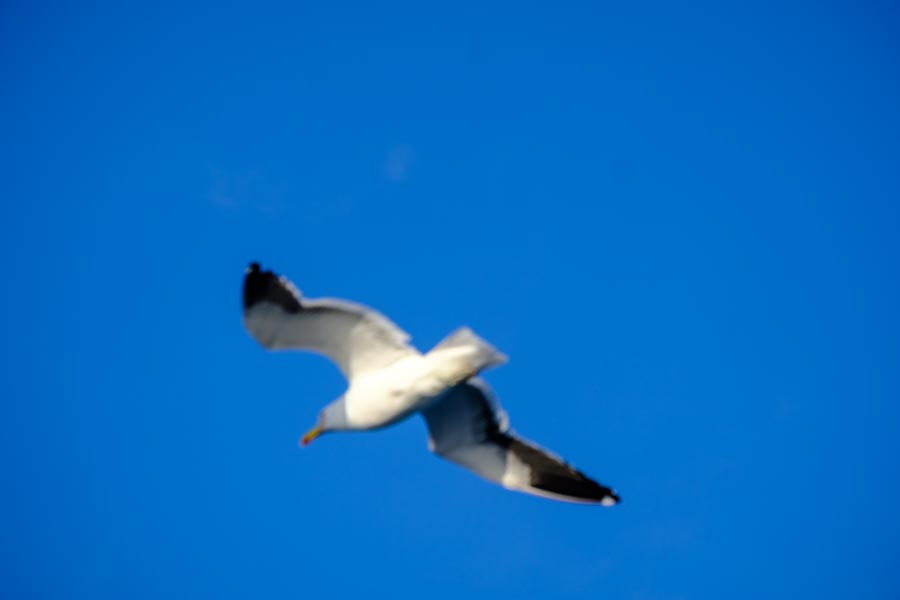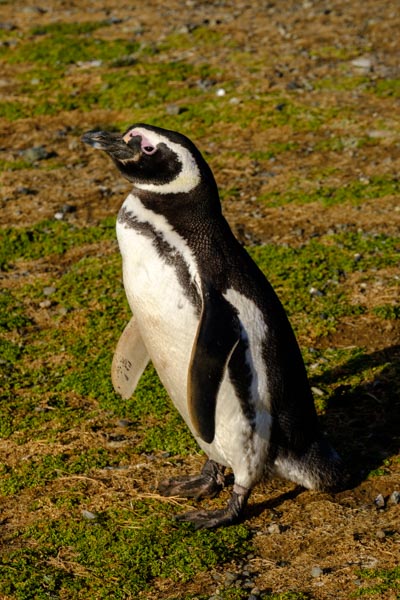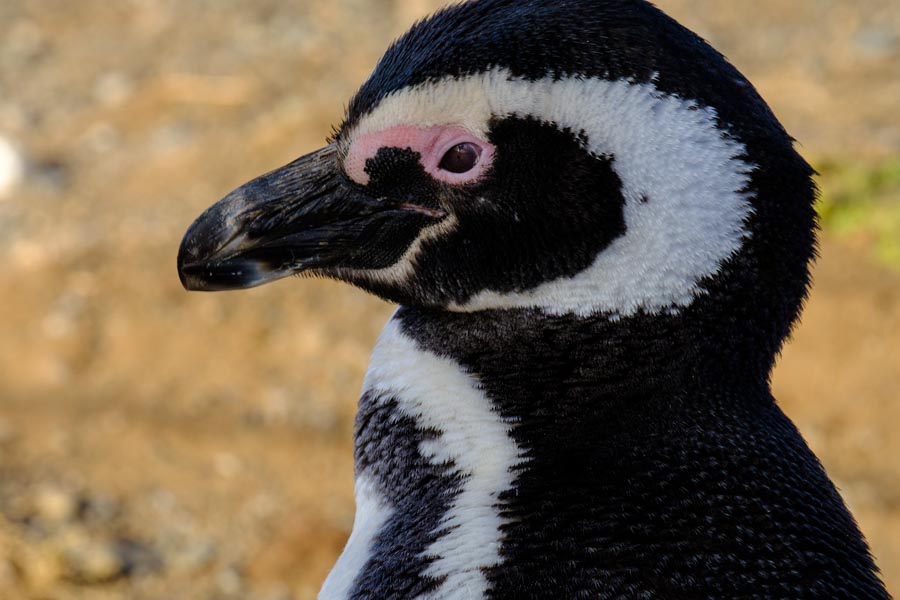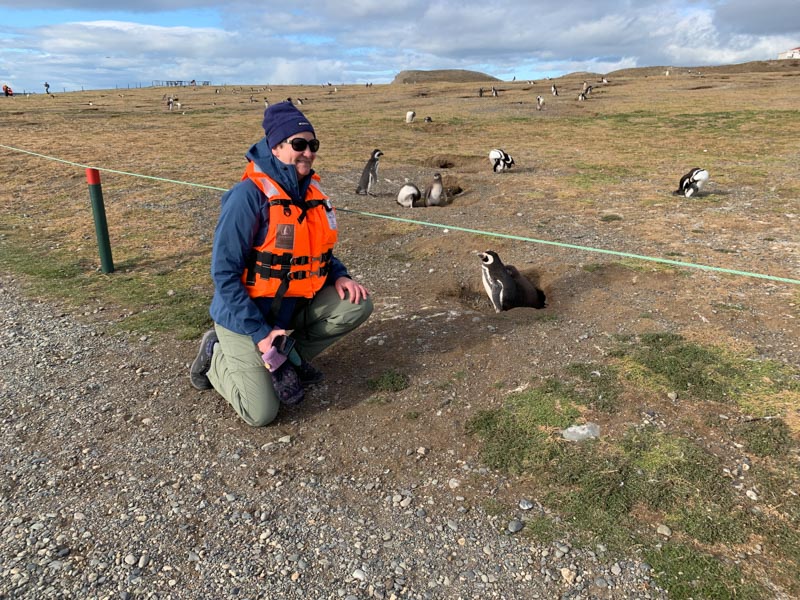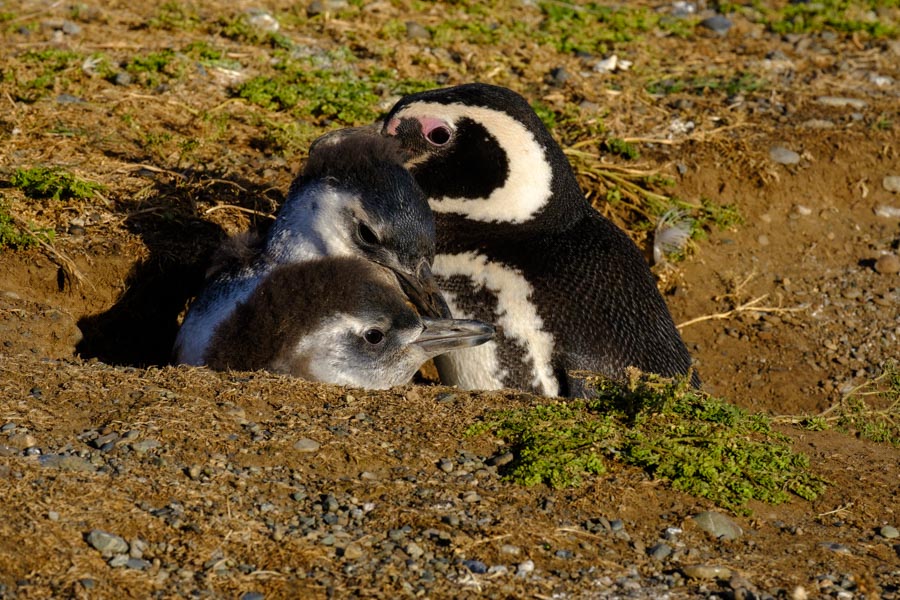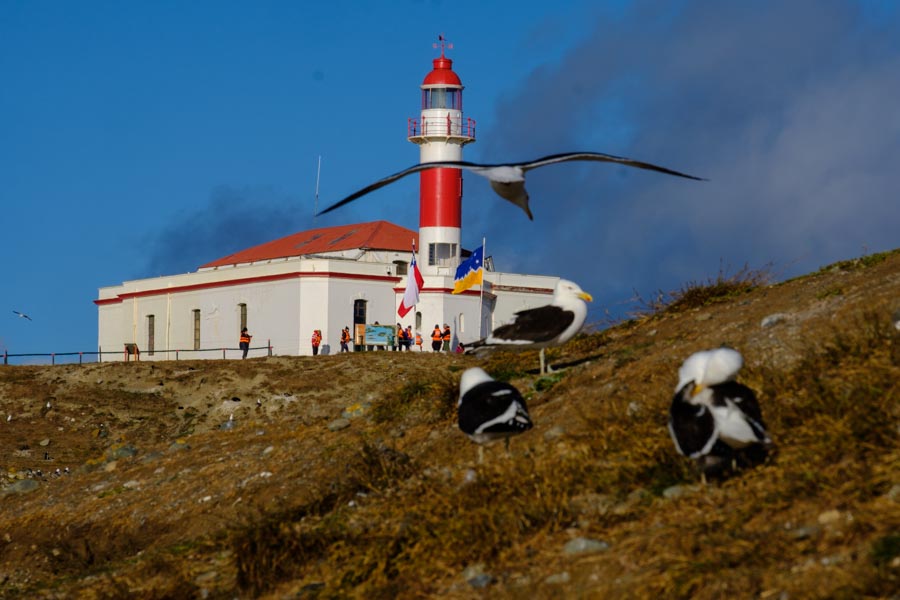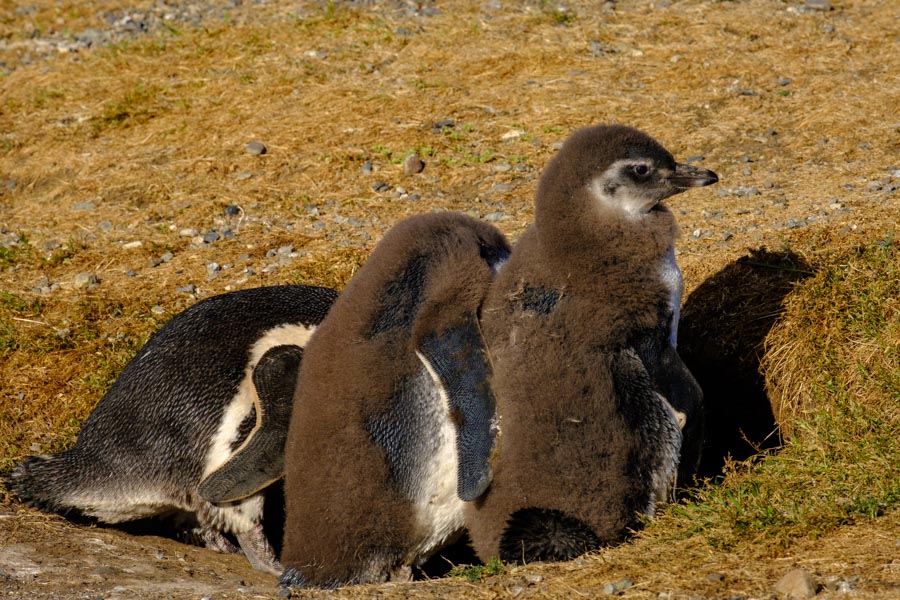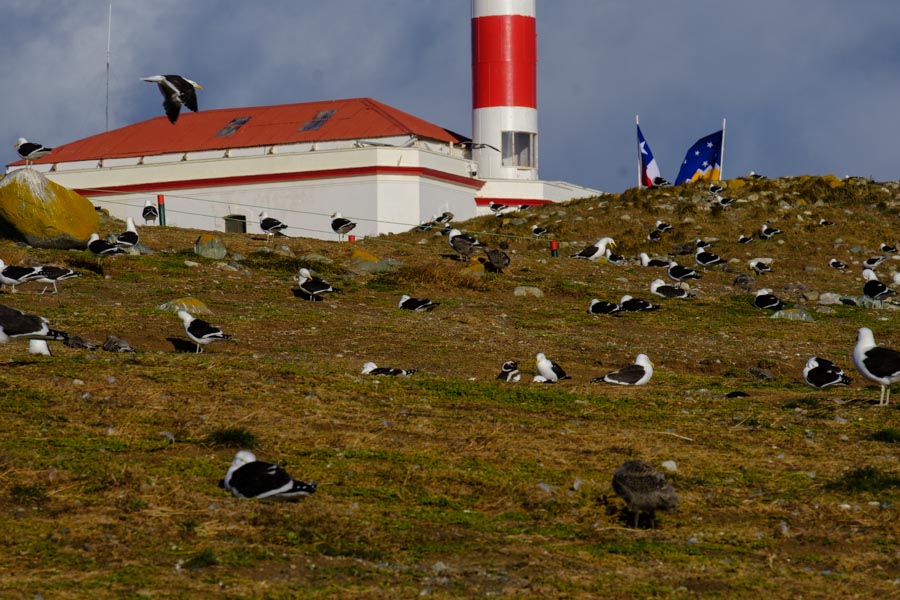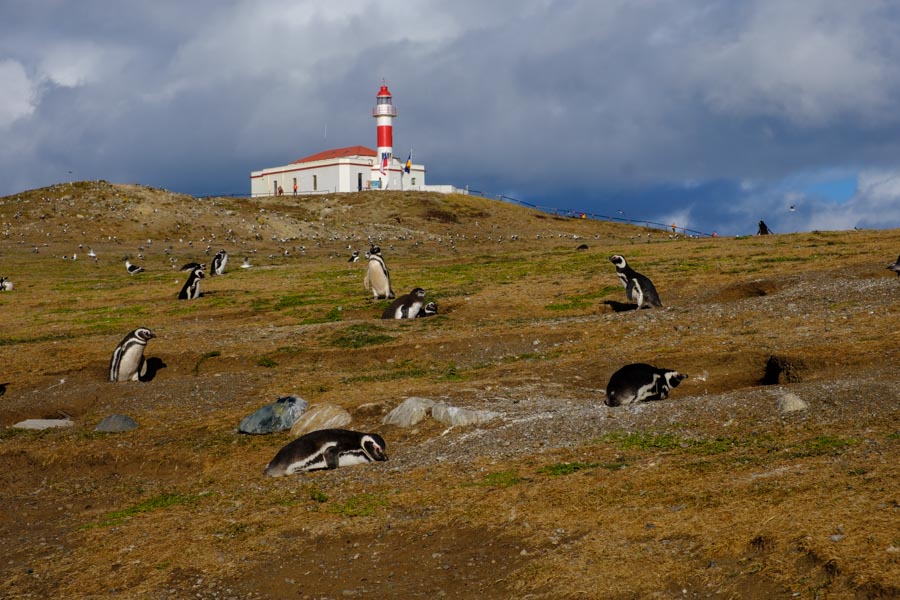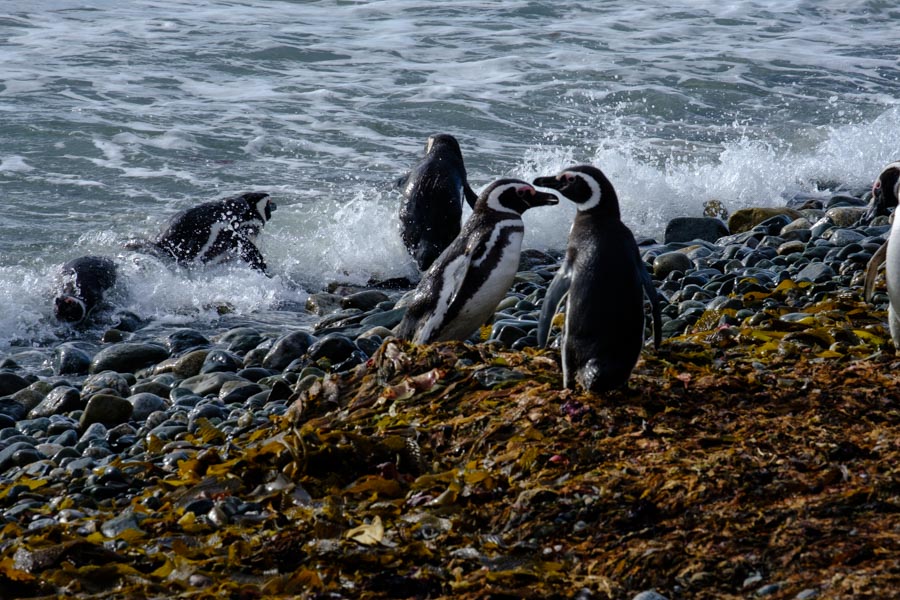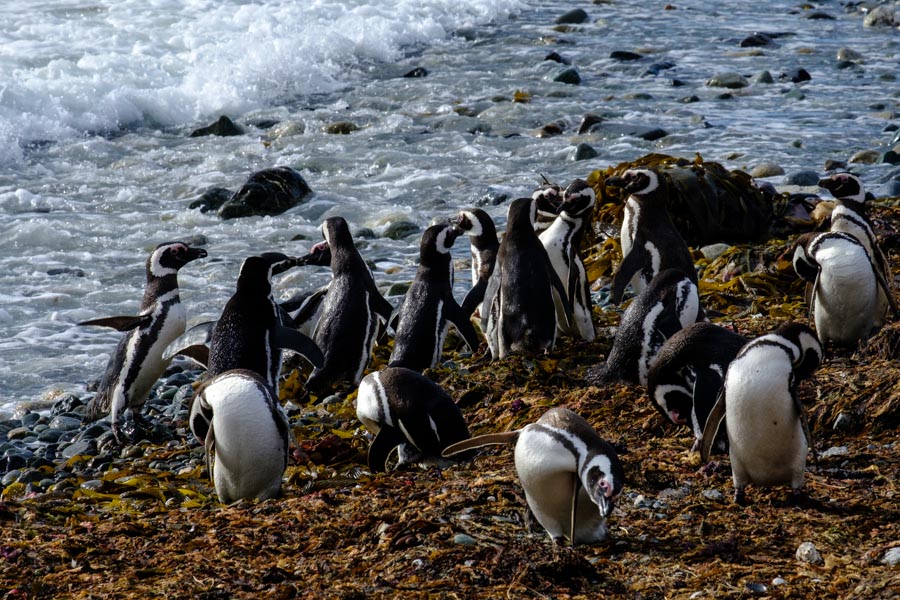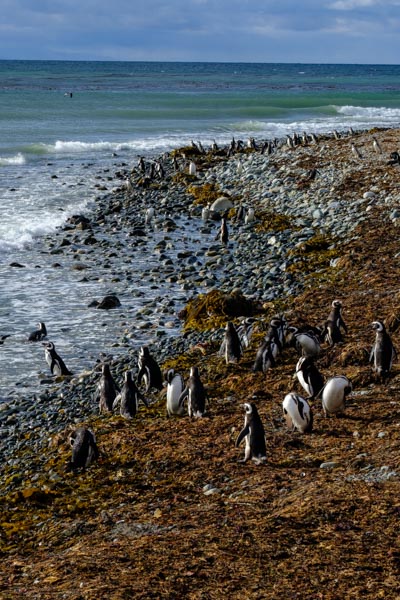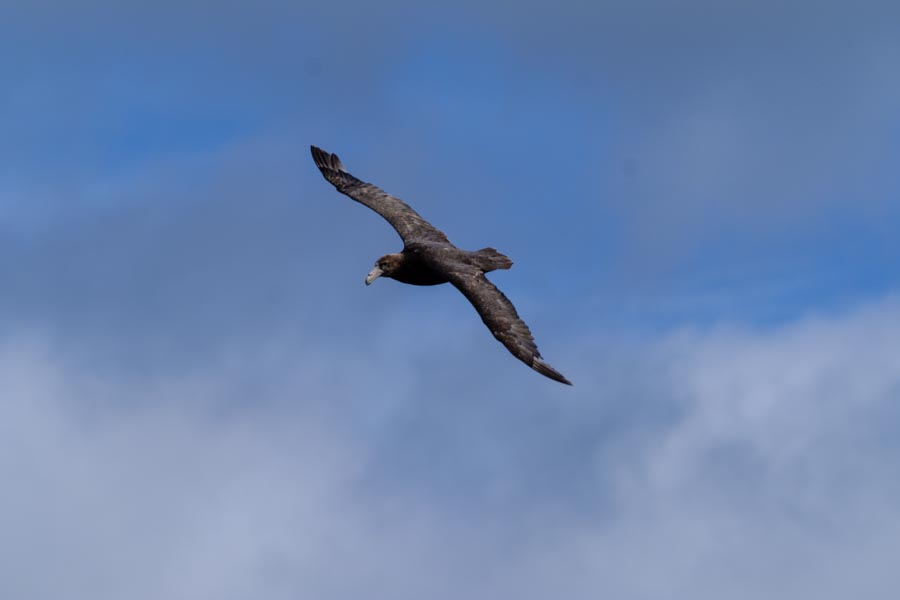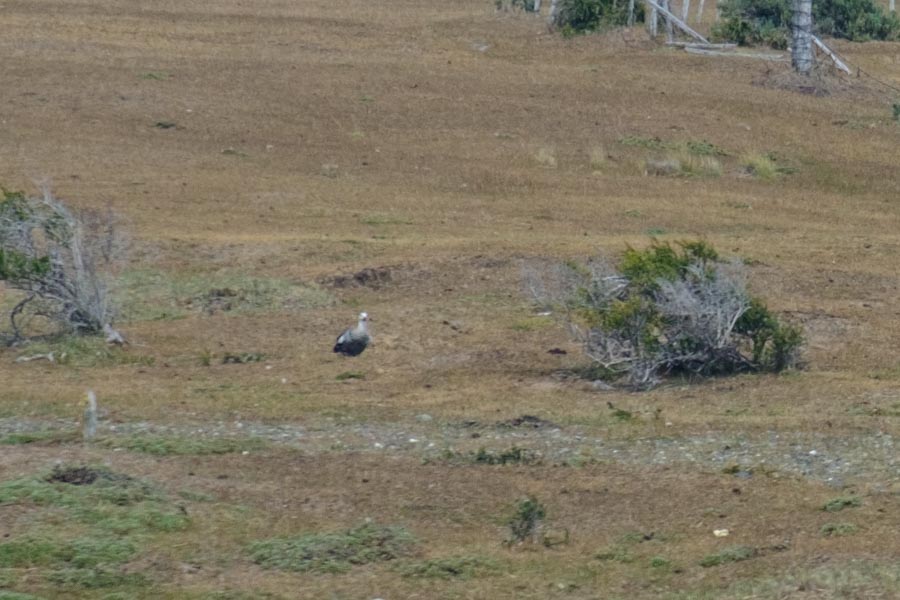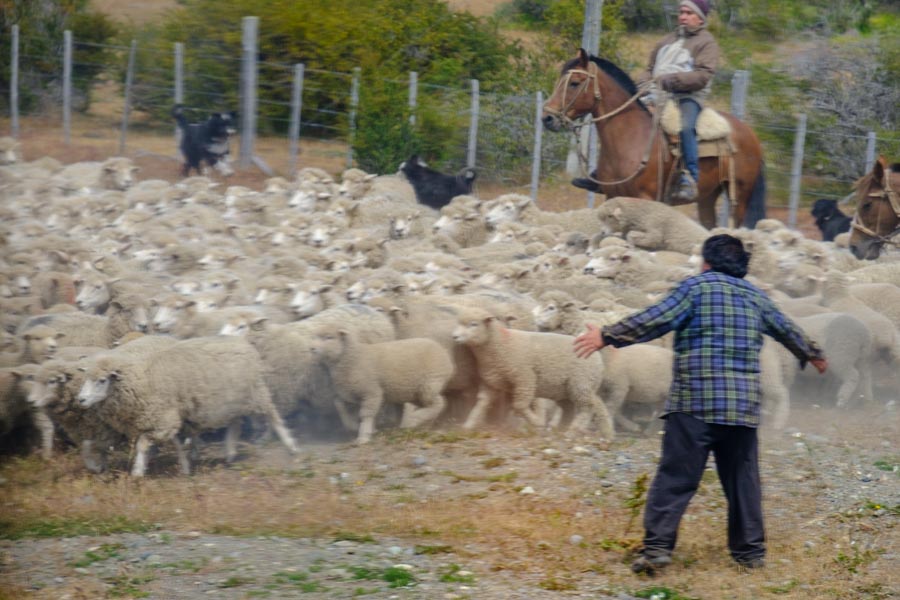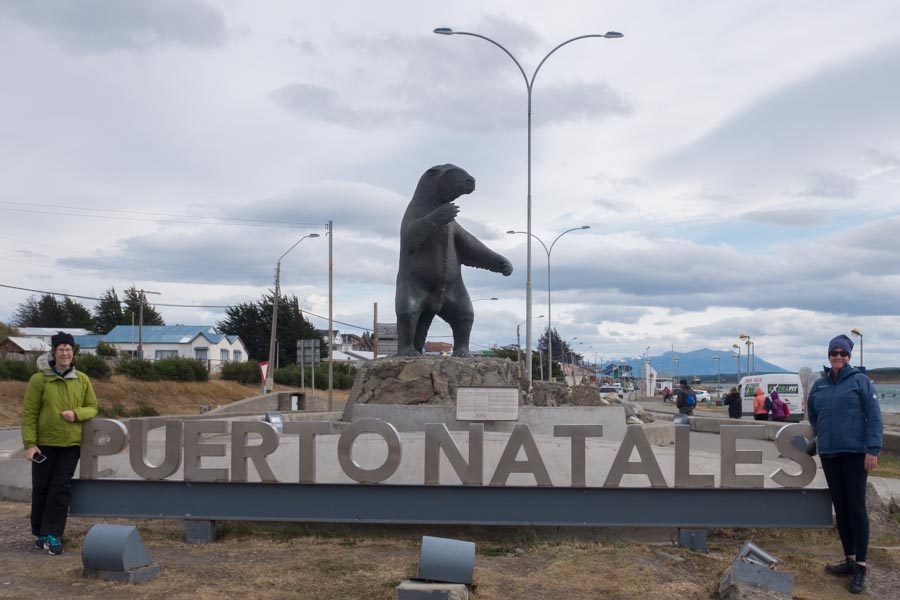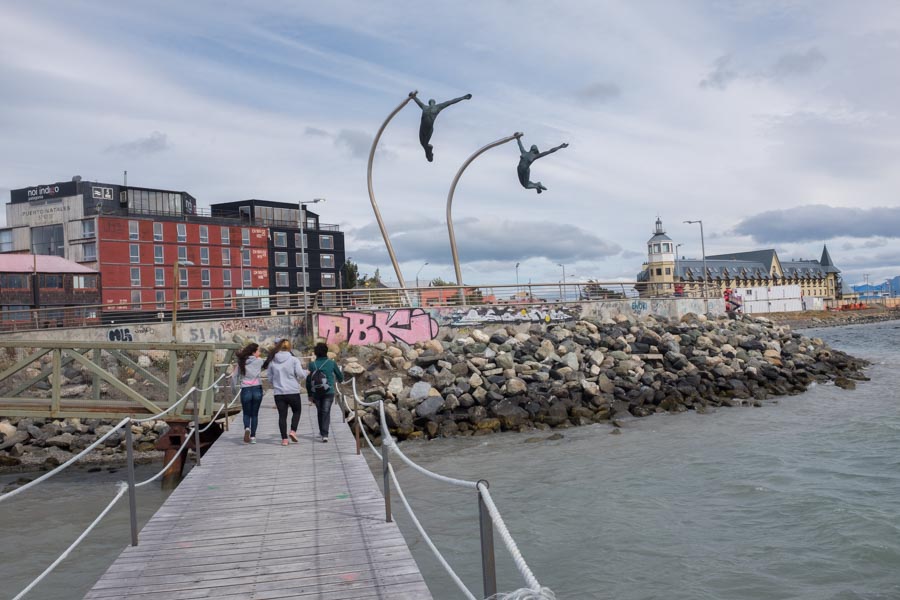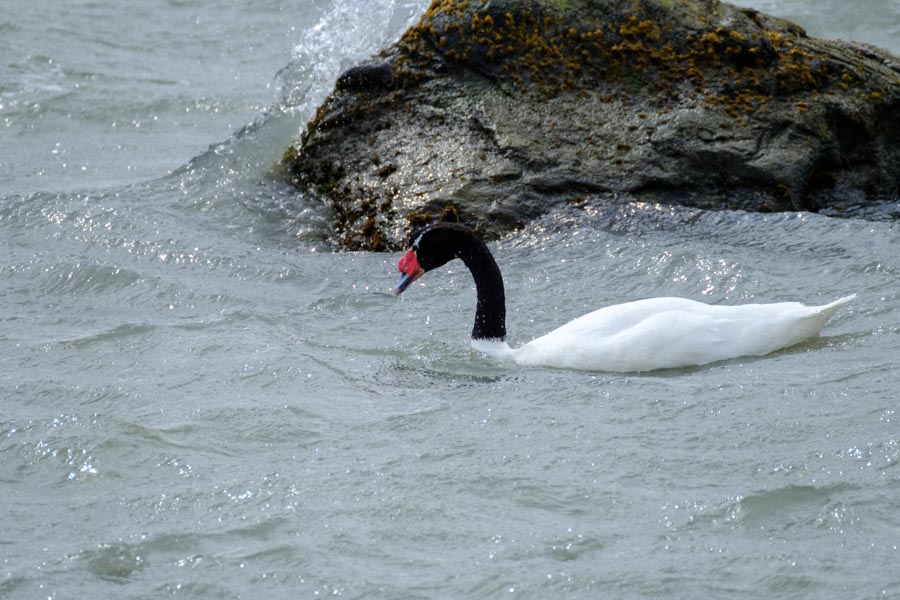The zodiac trip to Magdalena Island to see the penguins was our last zodiac expedition and the roughest ride of all. The crew told us that the trip would be cut short by the captain if the wind speed or wave height increased from the 7 AM levels. I never heard an actual wind speed reading but it must have been approaching 30 MPH and the swells must have been four or five feet high. But the boat crews handled the process well and no one got wet. We, particularly Sharon, were anxious to see the penguins and we weren’t disappointed. We dawdled and made the last boat back to the ship.
You may have seen pictures of the zodiacs in prior postings. They seat 14 passengers, plus the boatman who stands at the rear, leaning back against the 60 HP Yamaha outboard motor with the motor control shaft between his legs. Quite a macho sight, shall we say? Two crew members give us explicit instructions about how to enter and exit the zodiac: “put your right foot hear, grasp my arm for support, put your left foot hear, grab the arm of the other crew member who will help hoist you up.” That kind of thing.
Magdalena Island is a protected breeding ground for up to 360,000 Magellan Penguins and I’d say most of them were there today. We did indeed see adult, juvenile (1 to 5 years old) and baby penguins. They dig a nest in the ground, roomy enough to hold three or more penguins, especially the babies.
We arrived fairly early in the day before the penguins made the journey down the hill and into the water to gather food for themselves and babies back in the home burrow. They showed no fear of humans and would walk across our designated path with no apparent concern.
The island is also a breeding ground for Chilean skuas and cormorants. These birds can be predators, taking penguin eggs and hatchlings.
We had breakfast after our return, about 8:30 AM, had our bags out by 10 and then waited until after 1 PM for bags to be transferred and for us to clear Chilean customs. Ushuaia, our point of departure, is in Argentina and our arrival in Puerto Arenas is in Chile and the formalities include escorted bus transfer (100 meters, maybe), dog sniffers looking for forbidden agricultural imports and x-ray screening. Quite a production for two friendly neighboring countries, but then again they did fight a boarder war not that long ago.
Then on the bus and on our way to Puerto Natales, about 250 Km (150 miles) and about three-plus hours.
The trip traversed the Chilean steppe, a semi-arid desert region that covers a large portion of Patagonia. In Argentina it’s called the pampas although the exact definitions are a bit hazy in my mind. Here the terrain is fairly flat but not without gentle rises and valleys. In Argentina it’s much flatter, going on flat as far as the eye can see. The Chilean side has some green to it but much of the moisture is extracted from the air as it is forced up the western (Chilean) side of the Andes. The moisture falls as rain and snow and forms the Chilean ice fields we’ll be experiencing during the next few days. The air that reaches Argentina is quite dry and hence there is little rain on the eastern side of the Andes.
The steppe is not suitable for crops; it lacks nutrients and sufficient moisture. The British introduced sheep to the region and that, along with some cattle, is the major agricultural product. Tourism (naturally) and petroleum are other major sources of income for Puerto Areas and Puerto Natales.
Speaking of the British, the English language dominated Patagonia for most of the 19thand into the 20thcenturies. The Brits, along with immigrants from other parts of Europe settled in Patagonia while those of Spanish descent focused their efforts on developing the central and northern portions of Chile and Argentina.
Along the way we did see a number of birds, including the ostrich-like Rhea along with a flock of pink flamingoes. We also saw a few guanacos, the poor cousin of the llama/alpaca family. The wool is inferior. So is the meat. But tourists love them. So do pumas.
We arrived in Puerto Natales , a town of 20,000 compared to Puerto Area’s 120,000, in time for a short walk down the water front. The waterfront is actually part of the Magellan Channel. The temperature was OK (50s I’d guess) but did the wind ever blow. Believe it when they tell you Patagonia is windy.
Dinner was in the hotel – a very nice piece of salmon baked in a butter sauce. Speaking of salmon, farm-raised salmon is a big business here. Norwegians established the original farms but they hit on hard times and sold out to Mitsubishi. So when you see farm raised salmon from Chile at your local fish monger, be assured that the Japanese have your back.
